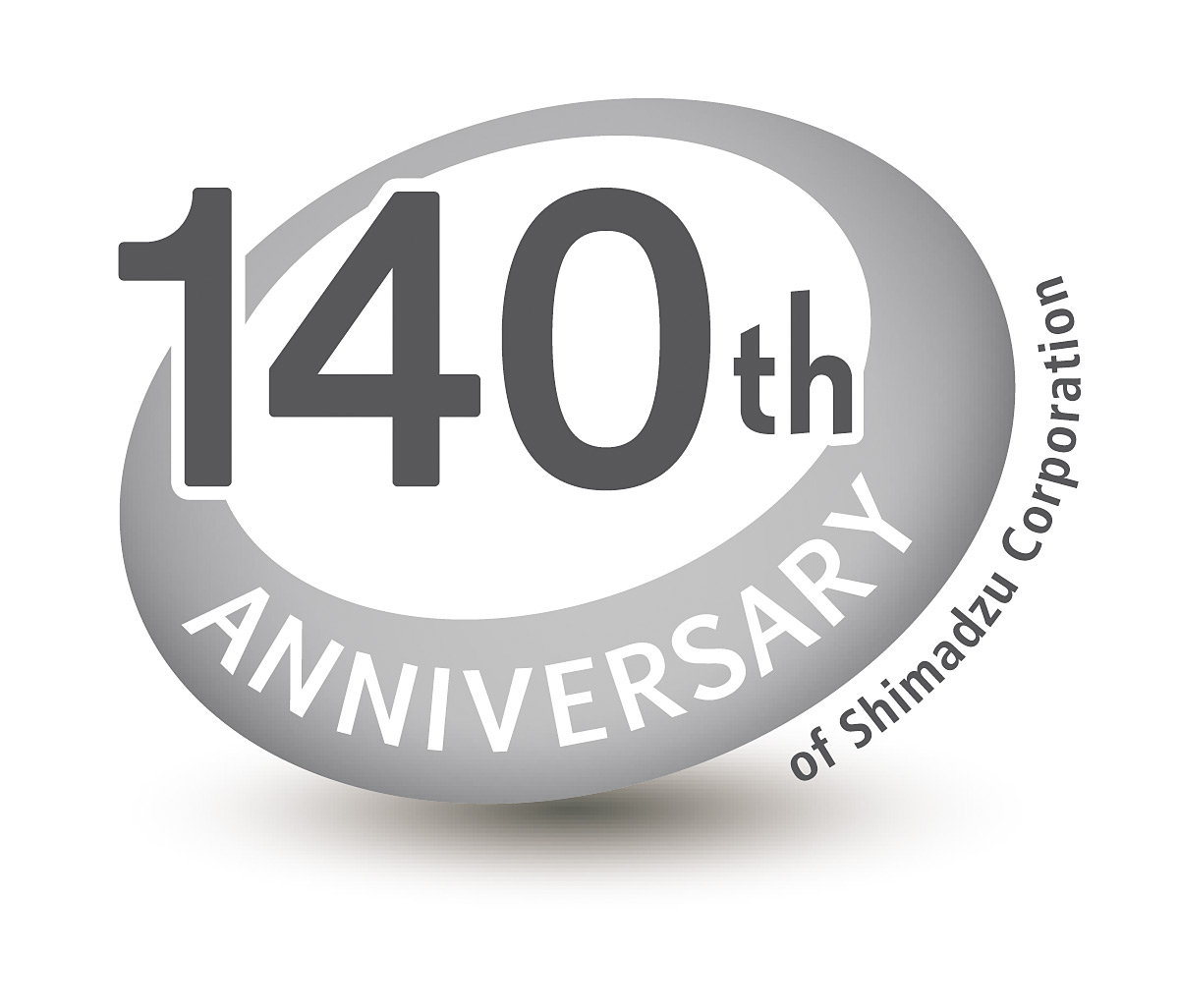Small explorers in the laboratory
Elementary school students playfully explore the world of analysis
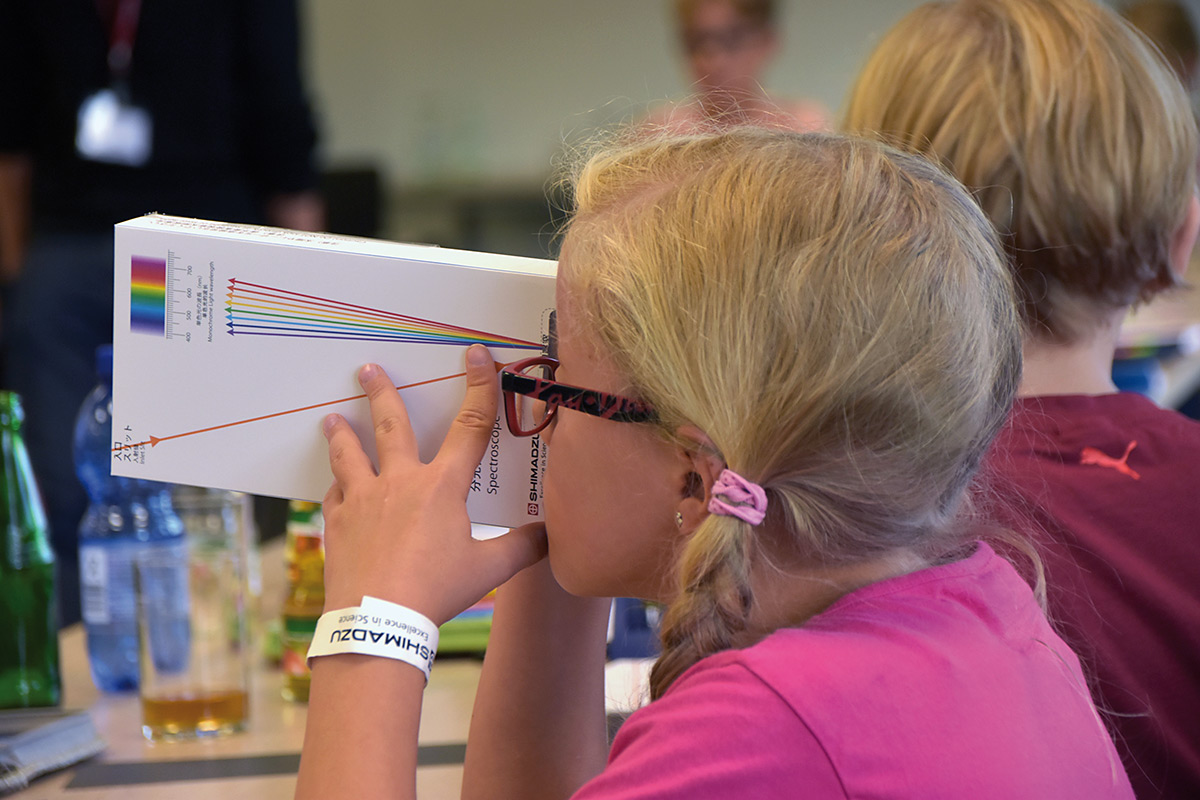
It is as quiet as a mouse in Shimadzu’s materials testing laboratory where 26 elementary school students of the Albert Schweitzer elementary school are eagerly holding their breath. Finally a faint click occurs, then a deep breath and surprised faces. This is what it sounds like when the testing machine breaks through a chocolate bar. The experiment is part of Shimadzu’s Summer School to which the company has, for the first time, invited 4th grade students of an elementary school in Duisburg. Here, the children can playfully learn how analytics and related technologies play a role in daily life – without anyone being aware.
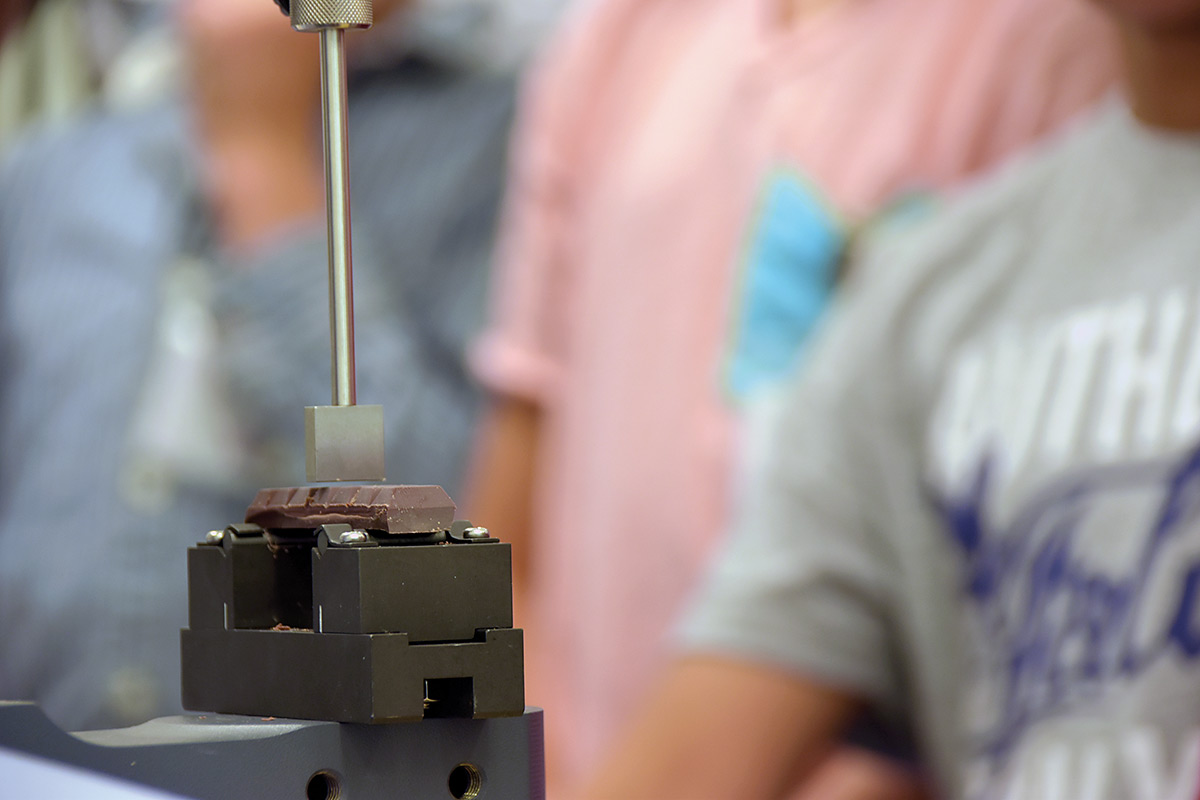
As an example, the chocolate bar: product specialist Mirnes Hasanbasic demonstrates in a test how much force teeth and jaws must exert to bite through a bar of chocolate. And the difference between milk chocolate and dark chocolate plays a role; the darker the chocolate, the harder the chocolate bar. This is how product manufacturers ensure that biting into your favorite chocolate bar or into an ice cream bar always imparts the same feel – and sound. Even uniform popping sounds are important. The boys were interested not only in food testing but especially in the harder materials: “What kind of objects or materials can Shimadzu’s instruments destroy? Also trucks, airplanes or even titanium?” These are also possible, but of course everything must first be disassembled into testable individual parts. Hearing this, their eyes light up.
Chromatography to trace down felt-tip pen and perfume
From the testing laboratory, the young students now move on to the conference room. There they sit down at their tables like ‘grown-ups’ and can finally do some testing themselves. Product specialist Dr. Ute Potyka presents a ‘child-friendly’ introduction to chromatography. Equipped with test tubes, felt-tip pens, paper strips and wooden sticks, it is now time to experiment. They observe how two narrow bands of ink slowly spread out over the entire piece of paper. This exciting spectacle is triggered as soon as the paper comes into contact with the water in the test tube. The fascination is great and the neighbor’s test tube is also eyed curiously – since depending on the color, the bands migrate up the paper at different speeds. On a flip chart Dr. Ute Potyka explains to the children in a few words how their experiment relates to instrumental chromatography. Although the term ‘chromatography’ may still appear to be somewhat awkward, the children could relate to the principle.
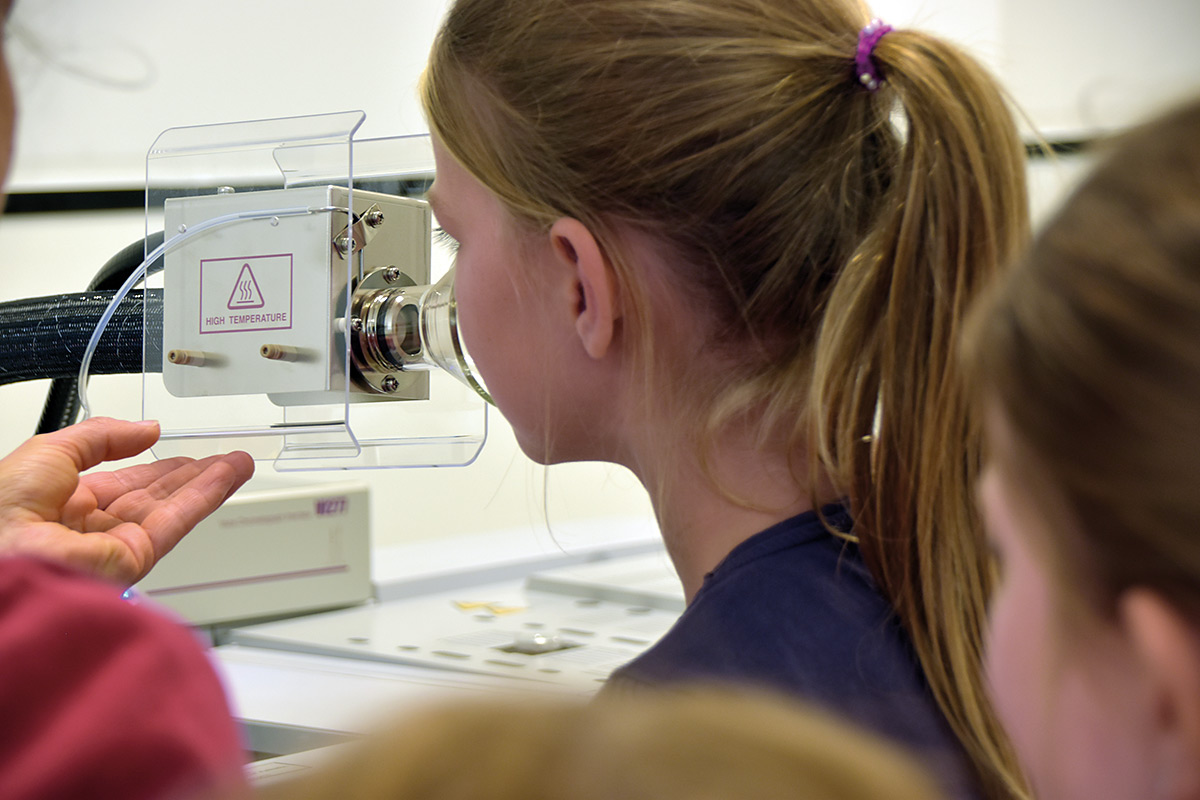
In the adjacent laboratory the students discover another aspect of chromatography: the perfume test. What perfumers had mixed together with loving attention to detail into a fragrance is now decomposed by Shimadzu’s GCMS-QP2010 into its individual scents. Is it possible to recognize these scents in the smell test? While the GCMS instrument is adjusting automatically to the correct temperature, the children curiously marvel at the giant instruments in the laboratory.
Dr. Hendrik Schulte explains how the autosampler works and demonstrates the closing force of the small door behind which the sample is analyzed. No jerking and tugging can open this door. “Not even ten elephants?” asks an interested student. “That would need to be tested,” ponders Schulte. However, the children quickly arrive at the conclusion that the elephants would not all fit in the laboratory at the same time. The proof of that experiment will have to wait …

The perfume is now prepared and ready for the smell test. Standing on a small stool, the children apply their noses to the ‘sniffer’ to smell the scents. English terms? No problem! The students have been learning English since the 1st grade. It is, however, more difficult to smell the individual scents: caramel, chamomile or perhaps something completely different? The solution is surprising and the children want to try again right away to find out if they can better recognize the scent with this new knowledge.
Spectroscopy – plunging into the colorful world of light
But it is also possible to analyze product components using Shimadzu’s instruments without first disassembling them. Product specialist Jan Knoop demonstrates this with a yellow toy car. While the students look at the peaks on the monitor with great interest, Knoop explains what they mean: “This old toy car still contains cadmium. In your toys, this is clearly no longer the case – much too unhealthy.” Even when cadmium is an unfamiliar term to the children, they do understand that the instrument helps to make their toys safer.
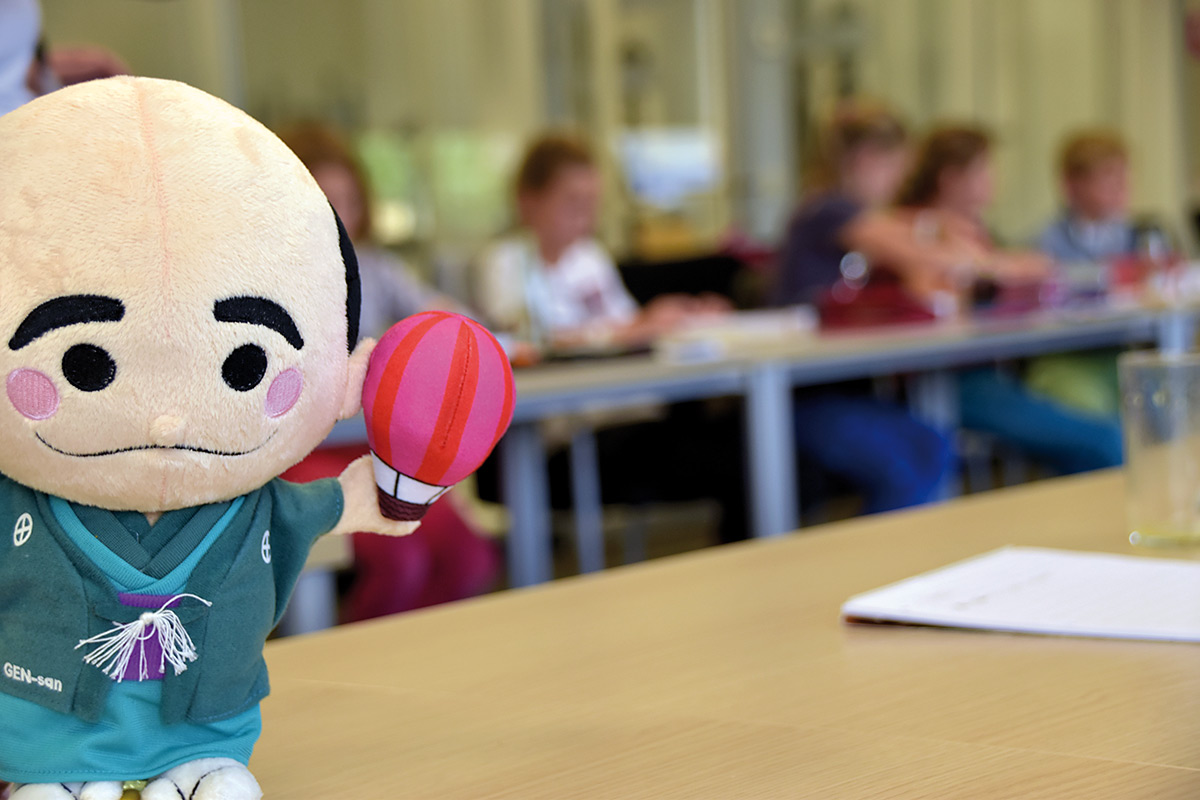
Concentrating hard, they build their next testing object: a spectroscopy box. Product specialist Marion Egelkraut-Holtus explains how a spectroscopy grating disperses the light. Once assembled, one looks through a pinhole to see the color composition of the light, which falls through a slit onto the opposite end of the box. “A rainbow, way cool!” cries out a girl excitedly. Depending on the light source, the children see colorful bands of different thickness in the box. While some children do not want to put the box aside, others already answer the questions eagerly in the final small quiz. A quick glance at the neighboring table confirms: the box is checked correctly.
From young explorer to young scientist
When you learn so much, you get hungry. At the end of the day, giant pizzas already await the children in Shimadzu’s cafeteria. While the young explorers satisfy their appetite, Uta Steeger, coordinator of the Summer School comes to a positive conclusion: “I am very happy that the children had so much fun. This encourages us as a company, to be able to offer students practical insights into the sciences and to awaken enthusiasm for these subjects.” This seems to have worked – before the young scientists are getting ready to go home, an urgent question: “How old do you have to be to become a trainee at Shimadzu?” Clearly, there is no shortage of future young talents at Shimadzu’s Duisburg location. And the class teacher is also convinced that the children have picked up many new experiences: “Even if they may not have understood the principles of all the experiments, there will be a moment later during physics lessons, when they ‘get it’ – practical knowledge has a long-term effect.”
